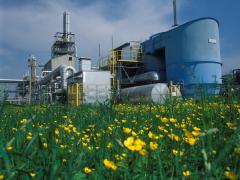Limiting global temperature change to 1.5 °C
There are several important factors that influence the size of the carbon budgets that are consistent with the ambition of the Paris Climate Agreement ‘to limit global temperature increase to well below 2 °C above pre-industrial levels, and to pursue efforts to limit this increase even further to 1.5 °C’. Some of these factors concern scientific uncertainties (e.g. limitations on the understanding of the climate system), while others are policy choices (e.g. the level of probability with which the target should be achieved). However, under all assumptions and policy choices, the Paris Climate Agreement requires very stringent emission reductions and changes in energy systems.
Explicit discussion on the need for negative CO2 emissions urgently needed
Scenarios show that, based on an assessment of technological potential, there are technology-related pathways that would still achieve the climate goals. These scenarios assume that it is possible to implement climate policies in most of the regions concerned, leading to a peak in global emissions within the next decade, followed by rapid reductions.
Although the reliance on negative CO2 emissions from the use of bio-energy combined with carbon capture and storage (BECCS) could be reduced, it will be very difficult to achieve the 1.5 °C target without negative CO2 emissions. In reality, only relatively small investments are being made in BECCS technologies, and there are concerns about the implications for food production and biodiversity protection, in relation to their large-scale use. As the support for these technologies, currently, is low and experience in large-scale application is lacking, it is important to discuss the feasibility of these pathways, more explicitly.
Authors
Specifications
- Publication title
- Limiting global temperature change to 1.5 °C: Implications for carbon budgets, emission pathways, and energy pathways transitions
- Publication date
- 7 November 2017
- Publication type
- Publication
- Publication language
- English
- Product number
- 2743




